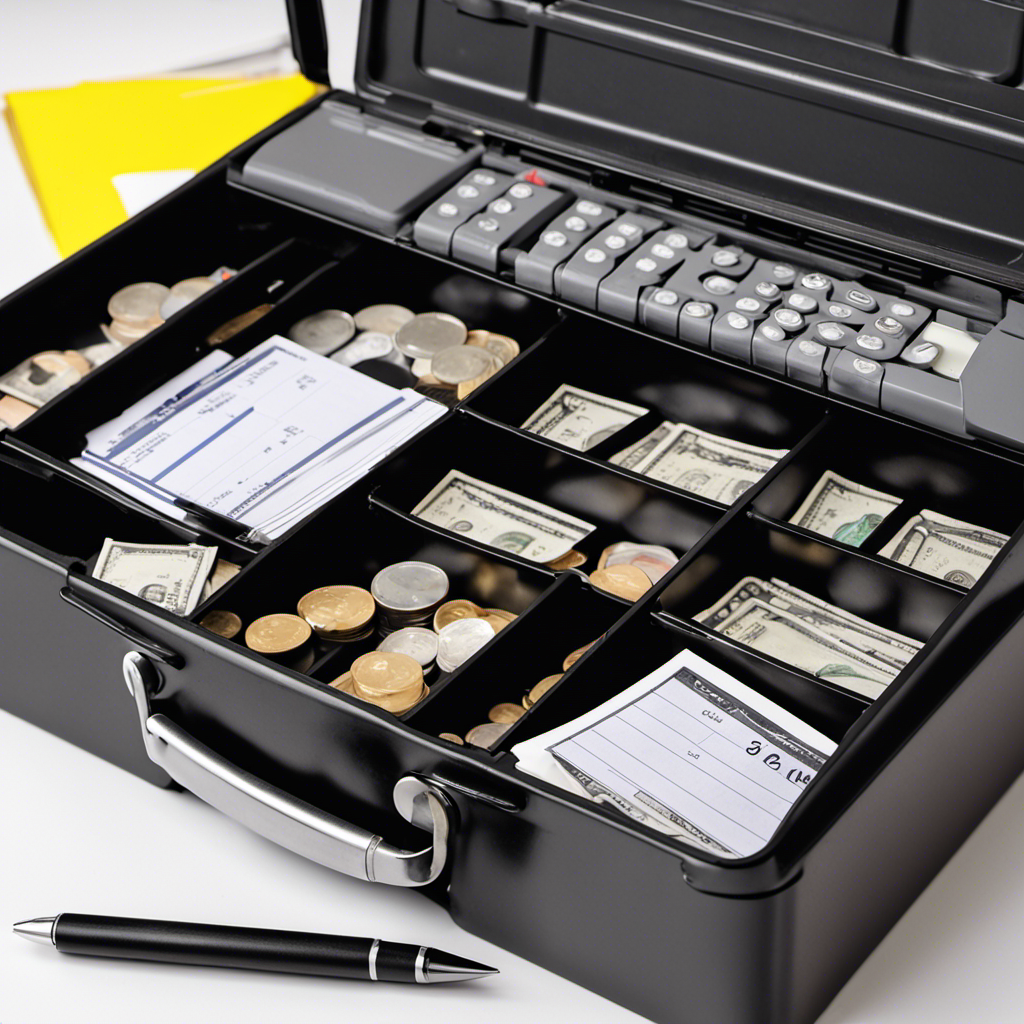Petty cash is an essential component of business financial management that provides a practical solution for handling minor expenditures efficiently. This comprehensive guide will help you understand what petty cash is,/how to use it effectively,/and best practices for managing it in your organization.
What is Petty Cash?
Petty cash is a small amount of physical currency that a company keeps on hand to cover minor expenditures that are too small or urgent to process through normal accounts payable procedures. This readily available cash fund enables businesses to handle immediate,/low-cost financial needs without delay.
Common Uses for Petty Cash
Typical Petty Cash Expenses Include:
- Employee Reimbursements: Covering small work-related expenses like parking fees or taxi fares
- Office Supplies: Emergency purchases of pens,/paper,/or other immediate needs
- Meeting Expenses: Snacks,/beverages,/or catering for small meetings
- Postal Services: Stamps,/courier fees,/or express mail services
- Minor Repairs: Small maintenance items or emergency fixes
- Entertainment: Client refreshments or small hospitality expenses
Purpose and Benefits
Petty cash serves several important purposes in business operations:
- Operational Efficiency: Eliminates delays associated with formal purchasing procedures
- Employee Convenience: Provides immediate reimbursement for legitimate business expenses
- Cost-Effectiveness: Avoids administrative overhead for very small transactions
- Flexibility: Enables quick response to unexpected minor expenses
- Customer Service: Allows immediate resolution of small customer-related expenses
Determining the Appropriate Petty Cash Amount
The optimal petty cash amount varies based on several organizational factors:
Key Considerations:
- Organization Size: Larger companies typically need more petty cash
- Business Nature: Service businesses may need less than retail operations
- Expense Frequency: Consider how often small expenses occur
- Geographic Location: Urban locations may require more cash for parking and services
- Seasonal Variations: Account for periods of higher minor expenses
- Risk Tolerance: Balance convenience against security risks
Most businesses maintain petty cash funds ranging from $50 to $500,/depending on their specific needs and risk profile.
Petty Cash Custodian Responsibilities
Key Custodian Duties:
- Safeguarding Physical Cash: Secure storage and protection of funds
- Recording Disbursements: Documenting all cash transactions accurately
- Verifying Expenditures: Ensuring all expenses are legitimate and business-related
- Maintaining Internal Controls: Following established procedures and limits
- Reconciling Balance: Regular verification that cash plus receipts equal the fund total
- Reporting Discrepancies: Immediate notification of any irregularities
- Replenishment Requests: Requesting fund replenishment when needed
Tracking and Recordkeeping
Proper documentation is crucial for effective petty cash management:
Essential Documentation Practices:
- Receipt Requirements: All expenditures must have supporting receipts
- Petty Cash Vouchers: Use standardized vouchers for all transactions
- Detailed Payment Logs: Maintain chronological records of all activities
- Transaction Limits: Establish and enforce maximum per-transaction amounts
- Approval Processes: Define who can authorize different expense types
- Regular Reconciliation: Periodic verification of fund balance
Internal Controls and Procedures
Preventive Controls
- Segregation of duties between custodian and approver
- Maximum transaction limits
- Restricted access to petty cash
- Required documentation for all expenses
- Prohibited personal use policies
Detective Controls
- Regular surprise cash counts
- Monthly reconciliations
- Receipt verification procedures
- Periodic internal audits
- Variance analysis and investigation
Best Practices for Petty Cash Management
1. Establish Clear Policies
Develop written policies that define:
- What expenses are appropriate for petty cash
- Maximum transaction limits
- Required documentation
- Approval procedures
- Replenishment processes
2. Implement Strong Security Measures
- Store cash in a locked box or safe
- Limit access to authorized personnel only
- Consider surveillance in high-risk areas
- Use tamper-evident storage solutions
3. Regular Monitoring and Auditing
- Conduct surprise cash counts
- Review supporting documentation
- Analyze expense patterns
- Investigate unusual transactions
4. Technology Integration
Consider using:
- Digital petty cash management apps
- Electronic receipt storage
- Automated reconciliation tools
- Integration with accounting software
Common Pitfalls to Avoid
- Excessive Fund Size: Maintaining unnecessarily large cash amounts increases theft risk
- Poor Documentation: Inadequate recordkeeping can lead to compliance issues
- Lack of Controls: Insufficient oversight creates opportunities for misuse
- Irregular Reconciliation: Infrequent balance verification can mask problems
- Unclear Policies: Ambiguous guidelines lead to inconsistent usage
Replenishment Process
Standard Replenishment Steps:
- Reconcile Current Balance: Verify cash plus receipts equal fund total
- Prepare Replenishment Request: Document amount needed and supporting receipts
- Obtain Approval: Secure necessary authorization for replenishment
- Process Payment: Receive replacement cash from authorized source
- Record Transaction: Document replenishment in accounting records
- File Documentation: Store all supporting materials for audit trail
Digital Alternatives and Modern Solutions
While traditional petty cash remains useful,/businesses are increasingly adopting digital alternatives:
- Corporate Credit Cards: For recurring small expenses
- Employee Expense Apps: Digital reimbursement systems
- Prepaid Cards: Controlled spending with automatic tracking
- Digital Wallets: Mobile payment solutions for small transactions
Conclusion
Petty cash provides a convenient and efficient way to handle minor business expenses,/but it requires careful management and oversight to be effective. By implementing proper controls,/maintaining accurate records,/and following best practices,/businesses can enjoy the operational benefits of petty cash while minimizing associated risks.
Remember that the key to successful petty cash management lies in balancing operational efficiency with appropriate financial controls. Regular monitoring,/clear policies,/and proper documentation ensure that your petty cash system supports business operations without compromising financial security.
Whether you choose traditional petty cash or explore digital alternatives,/the principles of proper expense management,/documentation,/and control remain essential for maintaining financial integrity and operational effectiveness.
